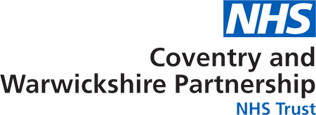Modern slavery or human trafficking is the movement of a person from one place to another (this could be country to country, town to town, or even as simple as one room in a building to another) into conditions of exploitation, using deception, coercion, abuse of power or the abuse of the person’s vulnerability. Even if a victim consents and is willing to be moved, trafficking could still be taking place. It involves either the threat of harm or actual harm to the person themselves or their family.
Signs of various types of slavery and exploitation are often hidden, making it hard to recognise potential victims. Victims can be any age, gender or ethnicity or nationality.
Whilst by no means exhaustive, this is a list of some common signs:
- Adult is not in possession of their legal documents (passport, identification and bank account details) and they are being held by someone else;
- The adult has old or serious untreated injuries and they are vague, reluctant or inconsistent in explaining how the injury occurred.
- The adult looks malnourished, unkempt, or appears withdrawn
- They have few personal possessions and often wear the same clothes
- What clothes they do wear may not be suitable for their work.
- The adult is withdrawn or appears frightened, unable to answer questions directed at them or speak for themselves and/or an accompanying third party speaks for them. If they do speak, they are inconsistent in the information they provide, including basic facts such as the address where they live
- They appear under the control/influence of others, rarely interact or appear unfamiliar with their neighbourhood or where they work. Many victims will not be able to speak English
- Fear of authorities
- The adult perceives themselves to be in debt to someone else or in a situation of dependence.
There is a national framework to assist in the formal identification and help to coordinate the referral of victims to appropriate services, known as the National Referral Mechanism. Certain public bodies such as local authorities and chief officers of Police have a statutory duty to refer. More information about the National Referral Mechanism can be found here.
The Modern Slavery Act 2015 brings together the legislative response to modern slavery. Modern slavery covers human trafficking, slavery, servitude and forced or compulsory labour. The Act includes:
- Criminal offences;
- Law enforcement powers in relation to slavery and human trafficking;
- The Independent Anti-Slavery Commissioner;
- Protections for victims of slavery and human trafficking; and
- Transparency in supply chains, which requires businesses above a certain size to report on the steps they are taking to ensure slavery and trafficking does not occur in their supply chain.
The Modern Slavery Police Transformation Unit (MSPTU) have produced 3 informative posters which we would like to share with you, they are:
There is no one type of Modern Slavery
There is no one type of Modern Slavery Offender
There is no one type of Modern Slavery Victim
Please feel free to download these posters to put up in your workplace.
There are organisations across the UK helping combat modern slavery and support the victims. Below are some of the links for your information:

















